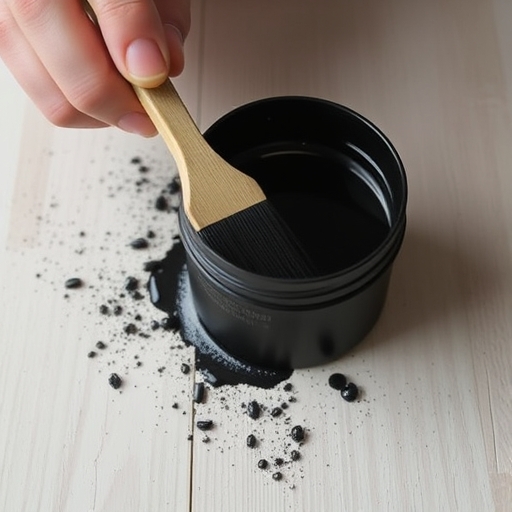How to Make Black Paint: A Comprehensive Guide
Creating your own black paint can be a fun and rewarding experience, whether you’re an artist, a DIY enthusiast, or simply looking to save some money. We will explore various methods to make black paint, the materials you’ll need, and the applications of black paint in different projects.
Understanding Black Paint
Black paint is a versatile color used in various applications, from fine art to home decor and industrial uses. It absorbs all wavelengths of light, creating a rich and deep appearance. Understanding the properties of black paint can help you choose the right method for making it.
Why Make Your Own Black Paint?
-
- Cost-Effective: Making your own paint can save money, especially if you need a large quantity.
- Customization: You can adjust the texture and finish to suit your needs.
- Creative Control: Create unique shades and undertones that store-bought paints may not offer.
Materials Needed
Before you start making black paint, gather the following materials:
For Mixing Primary Colors
-
- Red paint
- Blue paint
- Yellow paint
- Mixing palette
- Paintbrush or mixing stick
For Using Pigments
-
- Black pigment (carbon black, bone black, etc.)
- Binder (acrylic medium, oil, or egg yolk for tempera)
- Mixing container
- Palette knife or stirrer
For Natural Ingredients
-
- Charcoal (powdered)
- Ashes (from wood or other natural sources)
- Water
- Binder (as mentioned above)
Methods to Make Black Paint
Method 1: Mixing Primary Colors
One way to create black paint is by mixing primary colors. This method is simple and requires only three basic colors.
Steps:
1. Start with Red Paint: Squeeze a small amount of red paint onto your mixing palette.
2. Add Blue Paint: Mix in blue paint gradually until you achieve a dark hue.
3. Incorporate Yellow Paint: Slowly add yellow paint to darken the mixture further.
4. Adjust Ratios: Experiment with the ratios of each color until you achieve a satisfactory black.
Tips:
-
- Use high-quality paints for better results.
- Make small batches to test different ratios.
Method 2: Using Pigments
Using black pigments is one of the most effective ways to create black paint. This method allows for deeper and more consistent colors.
Steps:
1. Select Your Pigment: Choose a black pigment like carbon black or bone black.
2. Mix with Binder: In a mixing container, combine the black pigment with a suitable binder. The ratio is typically 1 part pigment to 2 parts binder.
3. Stir Thoroughly: Use a palette knife or stirrer to mix until you achieve a smooth consistency.
4. Test the Color: Apply a small amount to a surface to see the final color.
Method 3: Creating Black with Natural Ingredients
If you prefer a more eco-friendly approach, you can create black paint using natural ingredients like charcoal or ashes.
Steps:
1. Prepare Charcoal or Ashes: Grind the charcoal or ashes into a fine powder.
2. Mix with Water: Combine the powder with a small amount of water to create a paste.
3. Add Binder: Mix in your chosen binder to achieve the desired consistency.
4. Adjust as Needed: Add more water or binder to reach your preferred texture.
Comparison of Methods
| Method | Color Quality | Cost | Difficulty | Customization |
|---|---|---|---|---|
| Mixing Primary Colors | Medium | Low | Easy | Limited |
| Using Pigments | High | Medium | Moderate | High |
| Natural Ingredients | Medium | Low | Moderate | Medium |
Applications of Black Paint
Black paint can be used in a variety of ways, including:
-
- Fine Art: For creating shadows, depth, and contrast in paintings.
- Home Decor: Used for furniture, walls, and accents.
- Craft Projects: Ideal for DIY crafts, models, and sculptures.
- Industrial Use: Coatings for machinery, equipment, and vehicles.
Tips for Using Black Paint
-
- Layering: When painting, consider layering different shades of black for depth.
- Mixing with Other Colors: Black can be mixed with other colors to create darker shades without losing vibrancy.
- Cleaning Brushes: Use soap and water to clean brushes thoroughly after using black paint to avoid staining.
- Testing Surfaces: Always test your black paint on a small area to see how it adheres and dries.
Frequently Asked Questions
1. Can I make black paint with food coloring?
While food coloring can create dark shades, it may not achieve a true black. It is better suited for crafts or temporary projects.
2. What is the best binder for black paint?
The best binder depends on the type of paint you want to create:
- Acrylic: For quick-drying and flexible paint.
- Oil: For a rich, glossy finish.
- Egg yolk: For traditional tempera paint.
3. How do I store homemade black paint?
Store homemade black paint in airtight containers to prevent drying. Keep it in a cool, dark place.
4. Can I use black paint outdoors?
Yes, but make sure to use outdoor-grade paint or seal it with a protective finish to ensure durability.
5. How can I lighten black paint if it’s too dark?
You can lighten black paint by mixing in a small amount of white paint or a light color, such as gray.
Conclusion
Making your own black paint is a rewarding process that allows you to customize your color and save money. Whether you choose to mix primary colors, use pigments, or create natural black paint, each method offers unique benefits. With this comprehensive guide, you can confidently create black paint for your artistic and DIY projects. Remember to experiment and have fun with your creations!

